Difficulty: Easy/Medium
Pelican push-ups or “Pelicans” as they’re known as are a type of push-up done on gymnastic rings which require great shoulder strength and flexibility.
The term “Pelican” comes from the shape of the shoulders and arms at the lowest part of the exercise, as the body declines below the rings which contracts your shoulders together behind your back similar to a Pelicans wings during flight.
Table of Contents
Stretches and Progressions for Pelican Push-Ups
Due to the flexibility required stretching is more important than ever in this technique, especially if you want to get a deep push-up. Alternate between stretching your arms out behind you and in front as shown below:

To really get your shoulders loose try skin-the-cats beforehand.
The Pelican Push-Up Technique
Lower the rings so they are approximately a foot off the ground. You’ll want to have them high enough so that the floor doesn’t stop you from getting as deep as possible, however if there too high you may find you struggle to gauge your height in this technique. Personally I prefer a height where you can just touch the tip of your nose to the floor at your lowest point, so pick a height where this is challenging but achievable. If you’re pushing yourself during this exercise you’ll most likely fall too so make sure it’s a softer surface if possible.
Find an object which is the same height as the rings (such as a step, a chair, or in my example a punch bag!) and place it on the ground so that the rings and the object are the same distance as your hands and feet would be in a regular push-up – get this right as this is the starting position.
The aim is to complete a push up so that your body goes lower than the rings, raising your arms back and behind you as far as you can. It is important to keep good press-up form so that your body is straight and stiff from your feet all the way to your head. Grip-wise you will want to start with the rings parallel to each other, but as your arms fall back behind you, you will end up twisting the rings outwards so that they are perpendicular to your body.
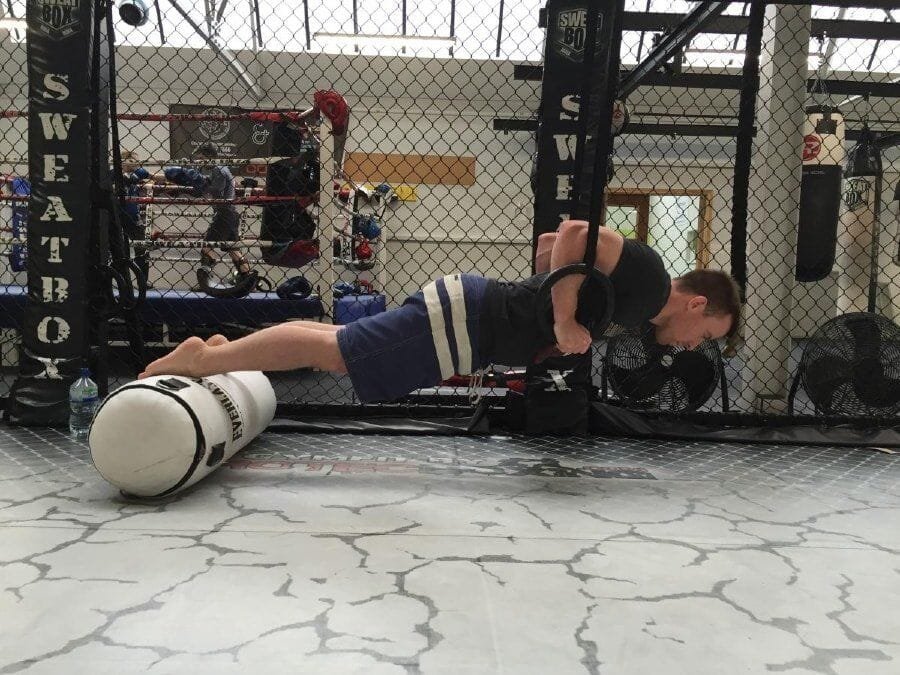
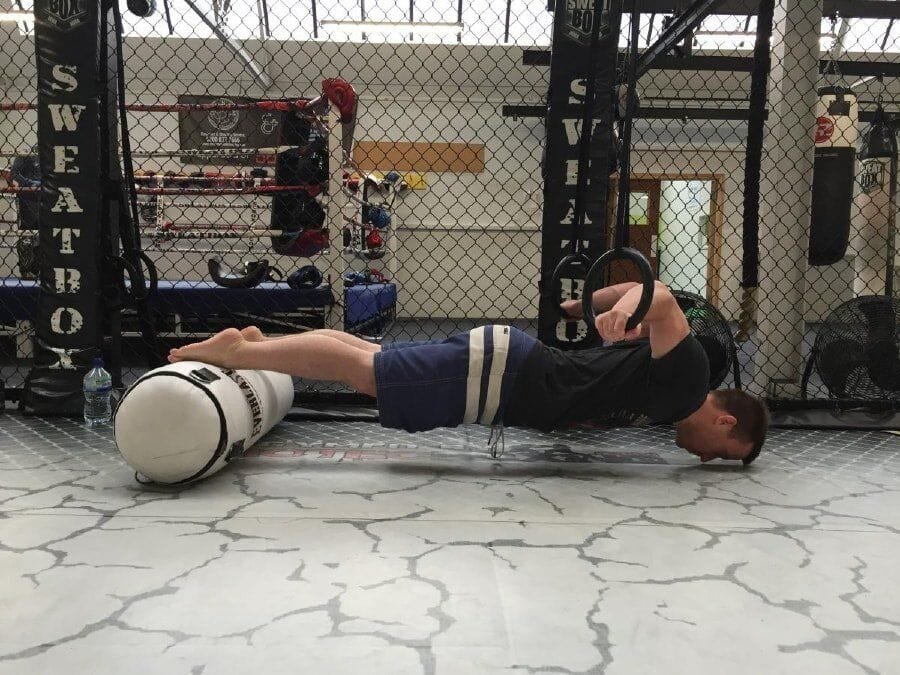
Finding your limit
The lowering part of the technique should be quiet easy however pushing yourself back up when you’re arms are stretched far back behind you will be very challenging. When learning this technique you should take it slowly and find your limit with small progressions. If you don’t fall flat on your face at some point then you aren’t trying hard enough, but again make sure you find a comfortable surface to practice on for when this happens!
Pelican Push-up Progressions
If you’re struggling with shoulder strength then try a couple of the following Pelican push-up progressions to build up your strength ready for full Pelican push-ups:
1. Simple ring push-ups: lower yourself until you’re shoulders and arms are at the same height as the rings. Aim for 8 – 10 reps with perfect form, ensuring you push yourself all the way back up so your arms are fully extended at the end of each rep.
2. Planche push-ups: start with your hands a bit lower towards your stomach so you are in a planche position. Hold the rings with your palms facing forward and keep your elbows close to your body in order to get used to your arms lifting up high behind you.This should feel harder than regular push-ups and will strengthen other parts of your shoulders which don’t work as hard in a regular push-up.
Again, remember to keep working on your shoulder flexibility so you can achieve deep “Pelican” looking push-ups. Here’s a few shots of Pelican push-ups from a front on angle:
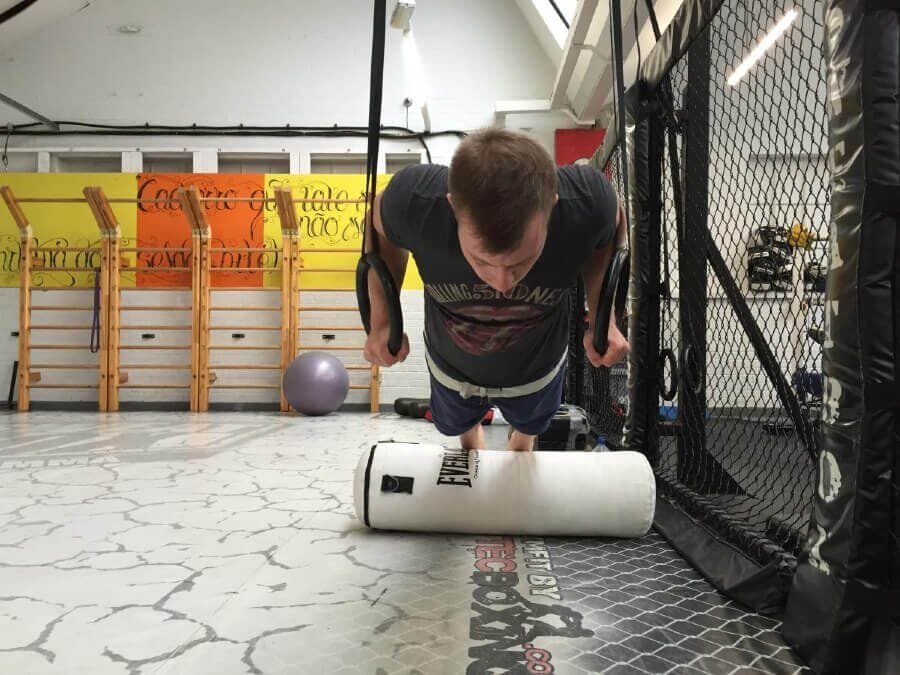
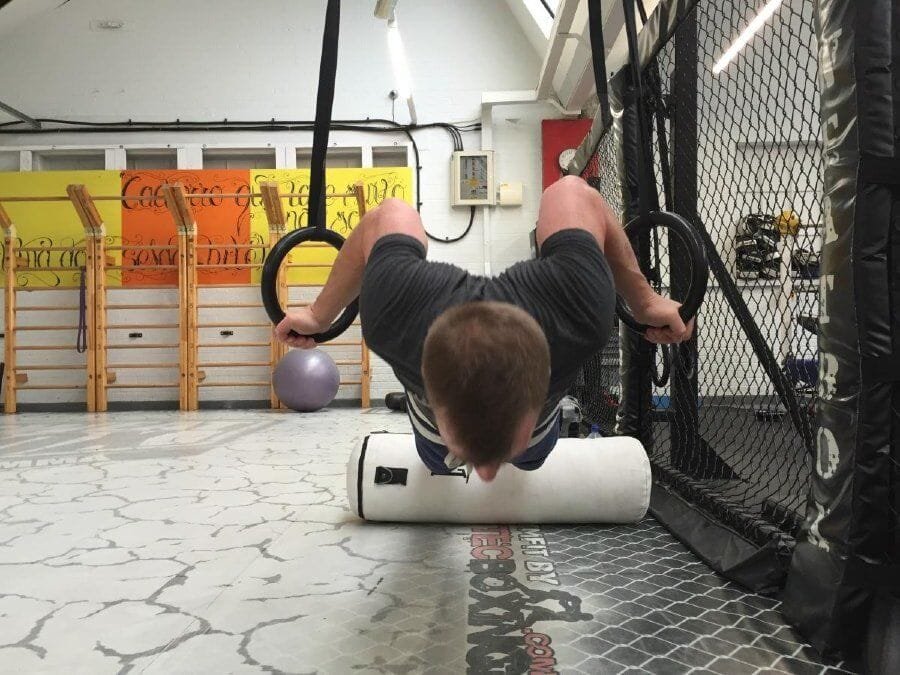
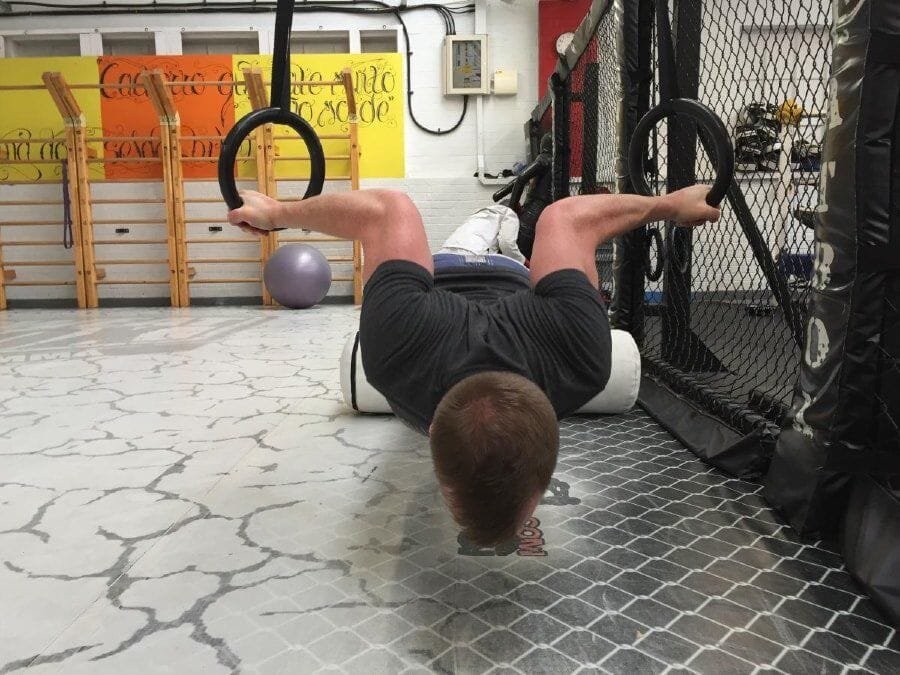
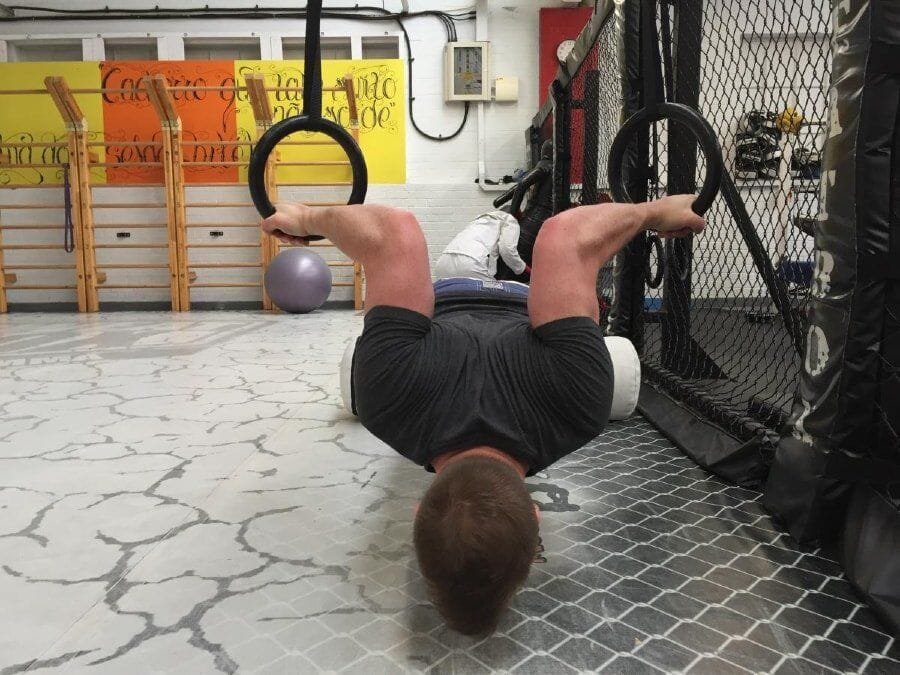
Looking to take your Pelican Push Ups to the next level? When you feel like you’ve perfected the technique you can try high up Pelican Push-Ups on the rings using a friend for support.
To do this, set the rings much higher and perform a ring Muscle-up to get yourself up off the ground. From this position have a friend spot you by holding your ankles, and from here try high up Pelican Push-Ups so that you’re approximately 5ft off the ground at the horizontal peak of the technique.
This advanced technique should certainly be attempted with caution, but should help you focus more on perfect form without trying to go too far past your breaking point!

Founder of www.calisthenics-101.co.uk. Training calisthenics since 2012.
Currently working on: 30 second one-arm handstand, muscle-up 360, straddle planche.